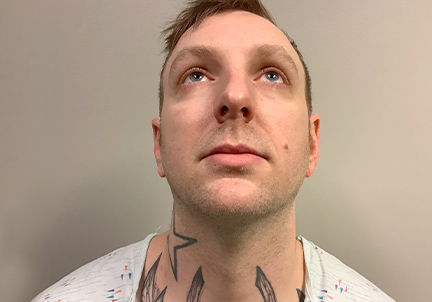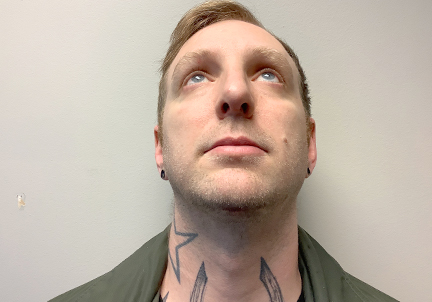Septoplasty
SEPTOPLASTY SEATTLE, BURIEN, & RENTON
According to some estimates, up to 80% of people have some sort of deviation in their septum. For many, this deviation may be slight or nearly imperceptible and cause no problems. Other people may experience breathing difficulties, sinus issues, and worsening of health problems due to a deviated septum. To correct a deviated septum, a surgery known as a septoplasty can provide a permanent fix. Dr. David Santos at Sinusitis In Seattle provides the best septoplasty Seattle, Burien, and Renton offers.
UNDERSTANDING SEPTOPLASTY
Septoplasty is a surgical procedure that corrects a deviated septum. A deviated septum is where the column of bone and cartilage that separates the nostrils is more to one side than the other. This can range in severity. A slight deviation may not be easily visible and not cause any symptoms. More severely deviated septums can disrupt the aesthetics of the nose and can cause many problems.
Some of the symptoms and conditions that a deviated septum can cause or worsen include:
- Snoring
- Sleep apnea
- Recurrent sinus infections
- Chronic sinusitis
- Facial pain (especially in the sinuses)
- Nasal polyps
- Headaches
- Loss of smell and/or taste
- Allergies
- Breathing problems
- Nasal obstructions
- Nosebleeds
- Mouth breathing
- Dry mouth
- Sleeping disturbances
For patients who suffer from asthma or similar problems, a deviated septum can worsen their symptoms or condition. Additionally, some problems such as chronic sinusitis or even sleep apnea are sometimes completely resolved after surgery. In most cases, the conditions improve and lower in severity following surgery.
Causes Of A Deviated Septum
There are two main causes of a deviated septum. First, the most common cause is simply that it is genetic and congenital. This means that the majority of people with a deviated septum were likely born with it. Though deviated septums can worsen with age and as a child grows up. Therefore, it may not cause issues from childhood.
The second most frequent cause of a deviated septum is injury, usually a broken nose. Injury to the nose can cause the septum to deviate and possibly cause the symptoms and conditions discussed earlier. This is especially common in people who play contact sports.
Benefits Of Septoplasty
For patients suffering severe symptoms of a deviated septum, there are many benefits of septoplasty surgery. Among some of the possible benefits of deviated septum surgery include:
- Improved breathing (easier to breathe through your nose)
- Reduction in sinus infections
- Treatment or alleviation of other sinus problems
- Correction of a previous injury to the nose
- Cessation or reduction in snoring
- Better sleep
- Improved sense of smell and/or taste
- Cosmetic improvements (such as fixing a crooked nose or hump on the nose)
- Easy to combine with a functional rhinoplasty
- Quick, outpatient procedure
- Performed by double board certified plastic surgeon and otolaryngologist
- Well tolerated recovery
- Likely back to work in a week or less
- May be covered by insurance
RHINOPLASTY vs. SEPTOPLASTY
Rhinoplasty and septoplasty are strikingly similar procedures often performed together and confused for one another. First off, both are nose surgeries that have both medical and cosmetic indications. Secondly, they can treat the same symptoms and conditions. Finally, the two procedures tend to be performed by the same types of surgeons, either a facial plastic surgeon or otolaryngologist. Dr. Santos is both.
See the table below for more information on exactly how the two surgeries differ and which may work best for you.
| Rhinoplasty | Septoplasty |
|
|
As previously mentioned, the two procedures are often combined. This combination surgery is sometimes referred to as a septorhinoplasty. It is estimated that anywhere from 30-50% of rhinoplasty procedures are performed with a septoplasty.
Dr. David Santos at Sinusitis In Seattle will examine your nose and nasal structures to determine the right course of action for your Seattle septoplasty. As an accomplished ENT surgeon and facial plastic surgeon, Dr. Santos has performed hundreds of septoplasties and nose surgeries. Therefore, this makes him one of the best septoplasty surgeons in the Greater Seattle area because he has the training to handle both the function and aesthetics of the nose.
BEFORE AND AFTER SEPTOPLASTY SURGERY
Before
Prior to undergoing a septoplasty in Seattle, you will need to have a consultation with Dr. Santos. During this consultation, Dr. Santos will determine if you are a good candidate for septoplasty surgery. First, he will want to know about your concerns and symptoms. He will then confirm whether you have a deviated septum. He may also ask how you acquired it (if it was from an accident). Dr. Santos will then review your medical history.
At this point, he can conclude whether you are a good candidate for deviated septum surgery. If you are, he will describe the procedure along with the risks, benefits, and expected results. If not, Dr. Santos will explain why and possible alternatives.
During
Septoplasty surgery at Sinusitis In Seattle is performed on an outpatient basis. The entire procedure is usually around one to one and a half hours. The surgery is performed under either local or general anesthesia. This will be discussed before surgery.
For most septoplasty procedures, the incisions are located completely within the nose. When combined with a rhinoplasty or severe cases of a deviated septum, a small incision may be made along the columella. From here, Dr. Santos will lift away the fragile mucosal lining on one or both sides of the nose. This requires precision to avoid tearing the lining.
After lifting the mucosal lining, Dr. Santos will then remove cartilage and/or bone and straighten the septum. The mucosal lining is then placed back over the septum and stitched together.
After
A septoplasty recovery is generally well tolerated by most patients. Patients often need to wear splints or packing for a few days to a week. Swelling and pain are normal and will subside over the coming days and weeks. Bruising is also possible. Dr. Santos may prescribe pain medications if necessary, though many patients find they can manage with over-the-counter painkillers.
Patients typically return to work within one week of their surgery, some as soon as a few days. It largely depends on what your job is and how you heal after surgery. Most forms of exercise will need to be reduced or cease for at least two weeks. You may need to wait six or more weeks to resume more strenuous workouts. Dr. Santos will continue to see you so that he can determine when you can return to your normal activities.
FREQUENTLY ASKED QUESTIONS
Does Acute Sinusitis Need Antibiotics?
Sometimes. If the symptoms of your acute sinus infection do not get better within a week and last longer than ten days, you may have acute bacterial sinusitis. In this case, antibiotics are prescribed to address the infection.
What Are Recurrent Acute Sinus Infections?
Recurrent acute sinusitis is defined as when a patient suffers from four or more acute sinus infections per year. Many factors can influence this and Dr. Santos can likely determine the cause of your recurrent sinus infections. Occasionally, sinus surgery may be required to address recurrent acute sinusitis.
Will A Sinus Infection Go Away On Its Own?
In many cases, yes. A viral infection will not respond to antibiotics and will need to run its course. However, treatments can make the process more comfortable for you and alleviate symptoms. Ultimately, though, viral sinusitis should go away on its own. If your sinus infection does not go away after two weeks, you may need further treatment.
What Is The Difference Between Chronic And Acute Sinusitis?
Acute sinusitis is a sinus infection that completely resolves within four weeks. This can include sinusitis caused by any of the main three causes, or which requires antibiotics. Chronic sinusitis is when sinus symptoms have not resolved within 12 weeks, or three months. Commonly, this indicates a larger problem or cause of sinusitis.
Chronic sinusitis symptoms must last 12 consecutive weeks. If your symptoms resolve and then recur, this may be recurrent acute or subacute sinusitis. Generally, chronic sinusitis symptoms tend to be milder, but last longer. Though, this is not always the case. Dr. Santos will discuss the length, recurrence, and severity of your symptoms during a consultation.
How To Tell If You Have A Sinus Infection?
The telltale signs of a sinus infection that differentiate it from a cold are facial pain and swelling. If you experience pain near the cheekbones, forehead, and around the eyes, this may indicate a sinus infection.
When Should I See An ENT?
Your doctor may refer you to see an ENT. Other times it is appropriate to see an ENT doctor is when sinusitis begins interfering with work and daily life consistently, sinus symptoms that have not resolved for several weeks, symptoms are severe, you have recurrent sinus infections, or have risk factors of chronic sinusitis.
If you feel more comfortable ruling out sinus problems or getting an expert opinion, Dr. Santos is more than happy to discuss your concerns.
DR. DAVID SANTOS, THE BEST ENT IN SEATTLE
Dr. David Santos is an accomplished Ear, Nose, and Throat specialist with board certifications in otolaryngology and facial plastic surgery. This makes him uniquely qualified to perform non-invasive sinus surgery. Dr. Santos has three decades of experience treating sinusitis of all types and performing sinus surgery.
Offering premier surgical and non-surgical treatment of sinus problems, Sinusitis In Seattle is the top destination for the best ENT Seattle offers. To learn more about acute sinusitis and to schedule a consultation, call us at (206) 242-3696 or contact us online.

Before

After
